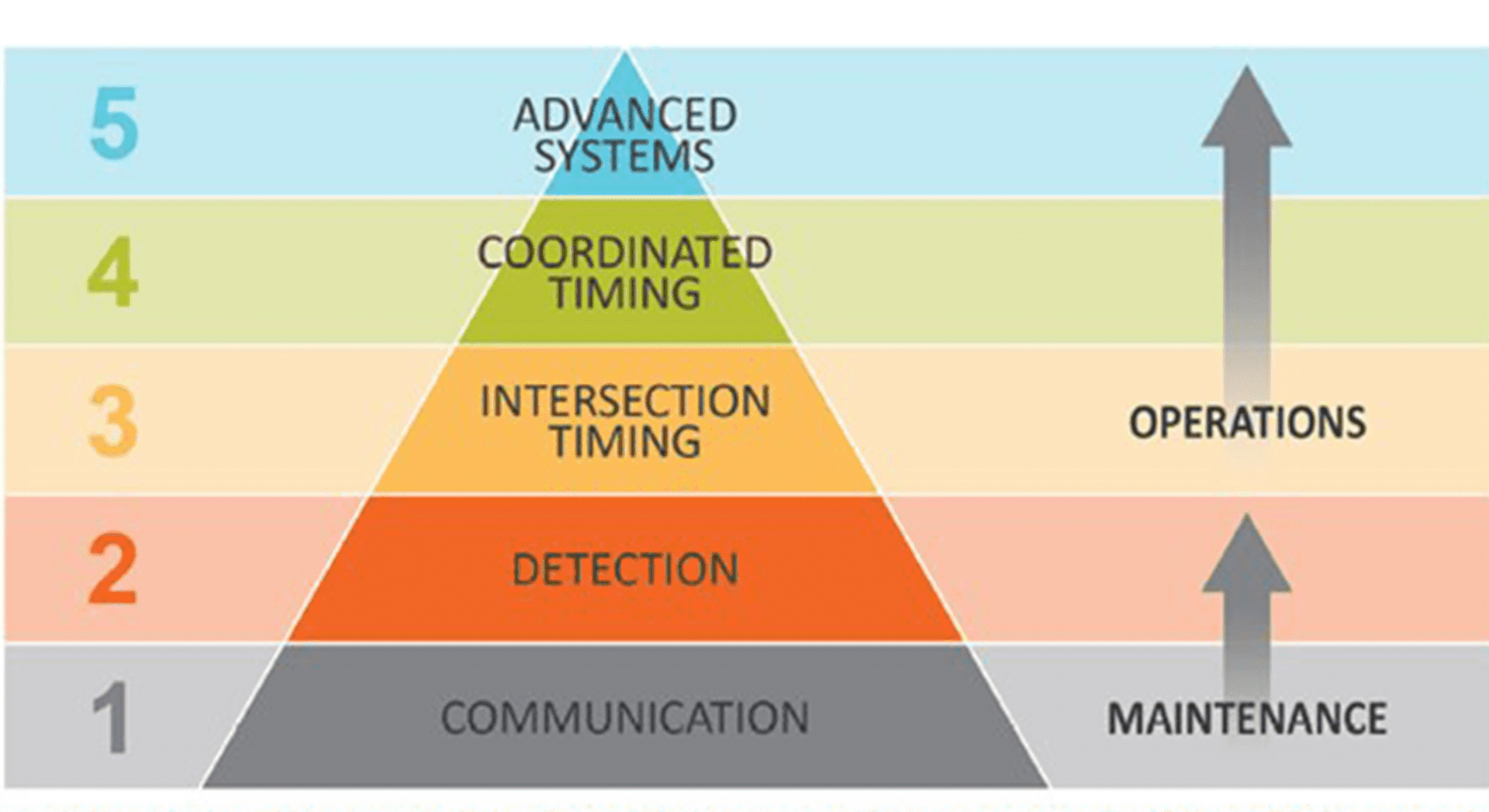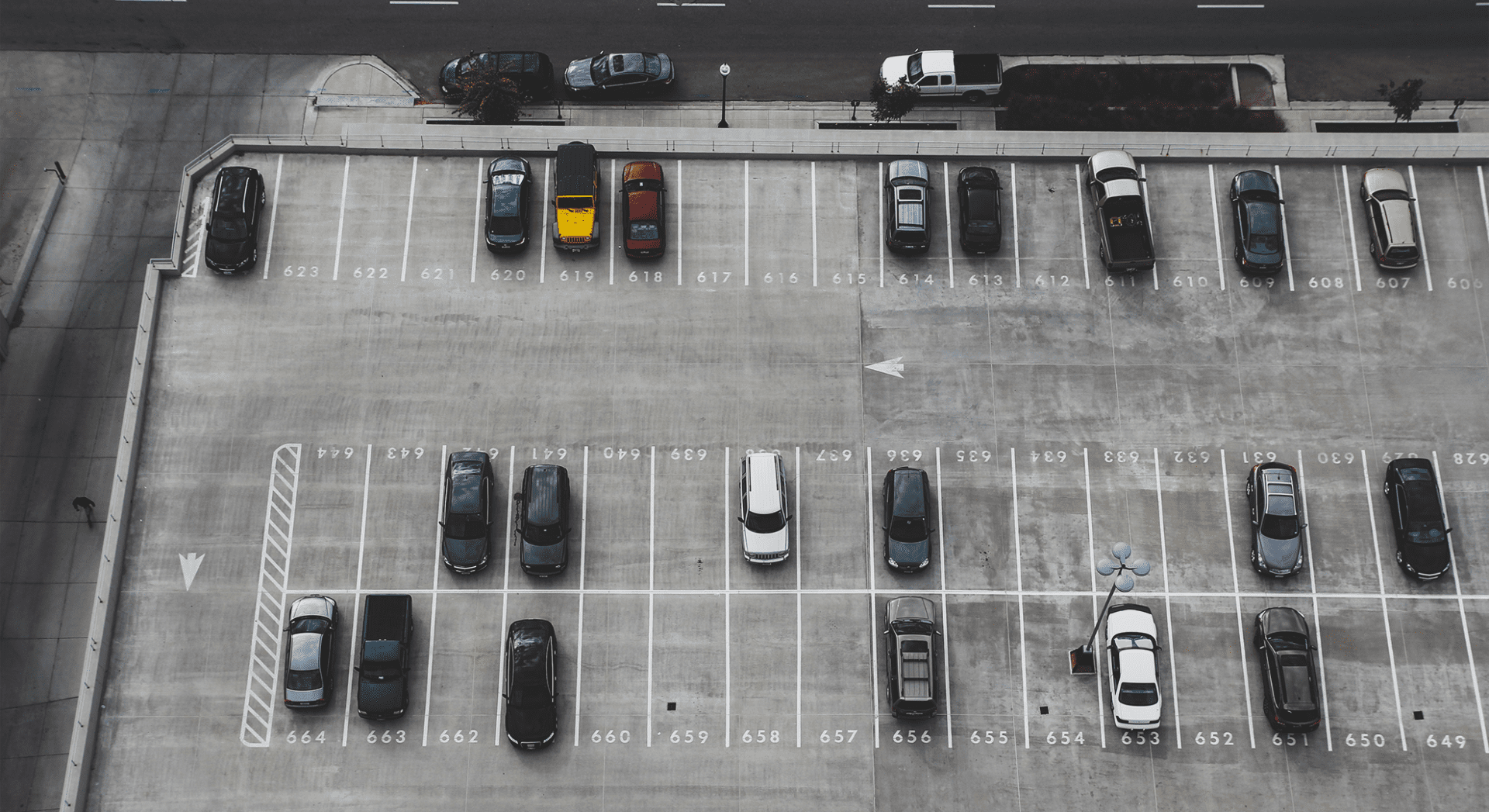August 2, 2022
Planning for the future is a necessary and daunting task for every community. We know intelligent transportation systems (ITS) are an integral part of our future, and with some future-proofing, even agencies with limited funding can be ready.
For agencies operating under tight budgets, ITS technologies-like traffic signal performance monitoring software, smart utility meters, curbspace or parking monitoring, electric vehicle charging infrastructure, and fiber-optic communications networks-may seem out of reach. But future-proofing doesn’t require transportation agencies to reengineer their jurisdictions from the ground up. With a little bit of planning, even less-funded locales can benefit from ITS. Rather than trying to invent new methods and technologies, practitioners can build on tools and processes other agencies already use.
City budgets vary. For example, for the fiscal-year 2020, New York City had a budget of $92.5 billion. More than $1 billion of that sum went to the city’s Department of Transportation (NYCDOT), allowing the City to spend about $342 per household. Cincinnati’s Department of Transportation and Engineering, on the other hand, had to make do with a budget of $13 million, which comes out to only $94 per household.
ITS technologies make our roads smarter, but they can also help us make smarter investment decisions by teaching us how people use them. Easier to mine and more precise than ever, data from ITS technologies reveals what our transportation networks need to perform more responsively, safely, and equitably. Smart applications provide precise, specialized feedback about how people use transportation infrastructure. But for these applications to run as designed, several underlying and supporting needs must first be satisfied.
Communication is a foundational need: without a certain physical and digital infrastructure, a city won’t be able to gather and share data in a way that will make its ITS work.

The conceptual hierarchy of needs for traffic signal systems. (Source: Advanced Traffic Signal Performance Measures (ATSPM) Guidebook, Kittelson & Associates, Inc. (2018))
The Smart Technology Hierarchy of Needs
Here are some simple, non-invasive ways municipalities can create a baseline level of communication:
- Maximize above-ground real estate. Reallocating space on above-ground traffic signal and lighting poles can make space for smart technologies. New smart street pole models typically provide space for mounting smart city infrastructure. To avoid an abundance of poles, cities can rethink the increasingly valuable space on existing poles. Agency contracts can insure against the fast-changing product and vendor landscape by letting agencies be flexible with what technology they install.
- Upgrade traffic signal detectors. Equipping traffic signals with data-collecting systems help agencies maximize existing road infrastructure. Cities should consider replacing in-pavement loop detectors with above-ground detectors like cameras or radar. Above-ground detectors are easier to repair and don’t impact pavement maintenance. Data collected by these systems can also study near-miss conflicts and help improve intersection safety.
- Focus on the basics. By fixing potholes and maintaining high-quality signage and pavement markings, municipalities can help optimize vision sensors on automated vehicles and advanced driver assistance systems. When smart vehicles see clearly, they can better integrate into traffic flow.
Even if a city ultimately decides not to layer more advanced technology into its backbone infrastructure, these above-ground investments will continue to benefit people driving, bicycling, or walking.

A fiber-optic communications backbone can connect signals, detectors, and smart infrastructure to share data, monitor system performance, and support better transportation and smart system management.
Preparing for Smart Technologies Below Ground
Quality infrastructure investments help prepare for ITS augmentation, but future-proofing sometimes requires going underground. In these cases, any municipality-but especially those with smaller budgets-can save time, money, and labor by adopting certain strategies:
- Expand the communications network. A fiber-optic communications backbone can connect signals, detectors, and smart infrastructure to share data, monitor system performance, and support better transportation and smart system management. Fiber networks power advanced traffic signal timing and ITS strategies like Portland’s next generation transit signal priority Cellular modems can be used as a stop-gap measure until funds for installing fiber-optic communications are ready.
- Adopt a “dig once” policy. Although a fiber-optic network is crucial for advanced signal operations, ripping up pavement to lay cable can be expensive and, depending on when the pavement was last redone, redundant. By adopting a “dig once” approach, agencies can take advantage of routine road maintenance to build their fiber-optic networks in segments. A “dig once” strategy can lower the total cost of a fiber-optic network and distribute that cost over time. Even if a city isn’t ready to install fiber-optic cable when pavement comes up, laying PVC pipe and installing fiber-optic handholes (with corresponding access points above ground) will ensure engineers have the option to lay cable in the future for minimal cost.
- Make the most of that one dig. Invasive maintenance presents an important opportunity to plan for other technologies. For example, when planning a new intersection, an agency might consider installing charging spaces for electric vehicles when the roadway is repaved. Another agency might use the maintenance as an opportunity to install parking sensors.

A city doesn't need to install parking sensors in every space to provide a public service. Installing sensors on a blockface scale and using predictive algorithms can still help drivers find open spaces-and at a fraction of the cost.
Future-Proofing Is an Investment
Above all, cities will need to be resourceful when they consider their transportation infrastructure future. Being well-prepared doesn’t necessarily require deep pockets. Agencies of any size and budget will see success with discretion, interoperability, and transparent communication.
Using discretion to determine what a city actually needs-and what it can handle-will illuminate which technologies to implement. We recently worked with Virginia’s Department of Transportation (VDOT) to deploy automated traffic signal performance measures (ATSPMs) statewide. Now, the project is focused on helping VDOT staff integrate these measures into day-to-day operations. Equipping a workforce with the necessary know-how ensures new technologies will go a long way to helping agencies streamline their work and maximize their resources.
In addition to planning around staff capacity, agencies can organize implementations around the concept of minimum viable product. A city doesn’t need to install parking sensors in every space to provide a public service. Installing sensors on a blockface scale and using predictive algorithms can still help drivers find open spaces-and at a fraction of the cost. Working at a minimum viable product level can help agencies have a consistent level of technology throughout their jurisdictions, a characteristic far preferable to wide, block-by-block variations in technology.
Cities can also forgo the expensive, specialized application of peer-to-peer controller communication in favor of simply synchronizing controller clocks. Both interventions orchestrate signal operations, but the latter is substantially cheaper and requires less expertise to manage.
Interoperability is another way to guide any future-proofing effort. Agencies might consider requiring assets to be interoperable by setting equipment standards to be used across municipality boundaries and with different technologies. These standards could be consistent equipment or equipment that follows specific traffic management strategies.
Communication isn’t just the first need in a technological hierarchy: it’s often the first requirement for the human element of these systems. Oregon’s transportation networks are also interoperable because the Oregon Department of Transportation (ODOT) practices proactive communication when making decisions. ODOT ensures uniform buy-in by soliciting input from its regional transportation authorities and negotiating with vendors to arrive at a price point for technology that is universally accessible to those departments.
Agencies can practice communication in other ways. For instance, to integrate smart parking technology into existing infrastructure, a transportation department may need to coordinate with local law enforcement and public works agencies, as sometimes, parking administration is distinct from transportation administration.
Continue the Conversation
In five years, what will be your city’s greatest challenge? Which emerging technologies might help? What does that mean for your city’s existing infrastructure?
Preparing for emerging technologies can seem like an insurmountable task for which there is never enough time, money, or energy. Instead of asking how your municipality must change to fit future technologies, consider how and which future technologies will benefit your municipality. Doing so will cut this task down to a size that fits your needs and budget. With some careful future-proofing, even small budgets can embrace ITS technologies.
At Kittelson, we help agencies find ways to combine emerging technologies with existing infrastructure to make transportation more responsive, safe, and equitable. If you have an idea to share, we’d love to hear it!
